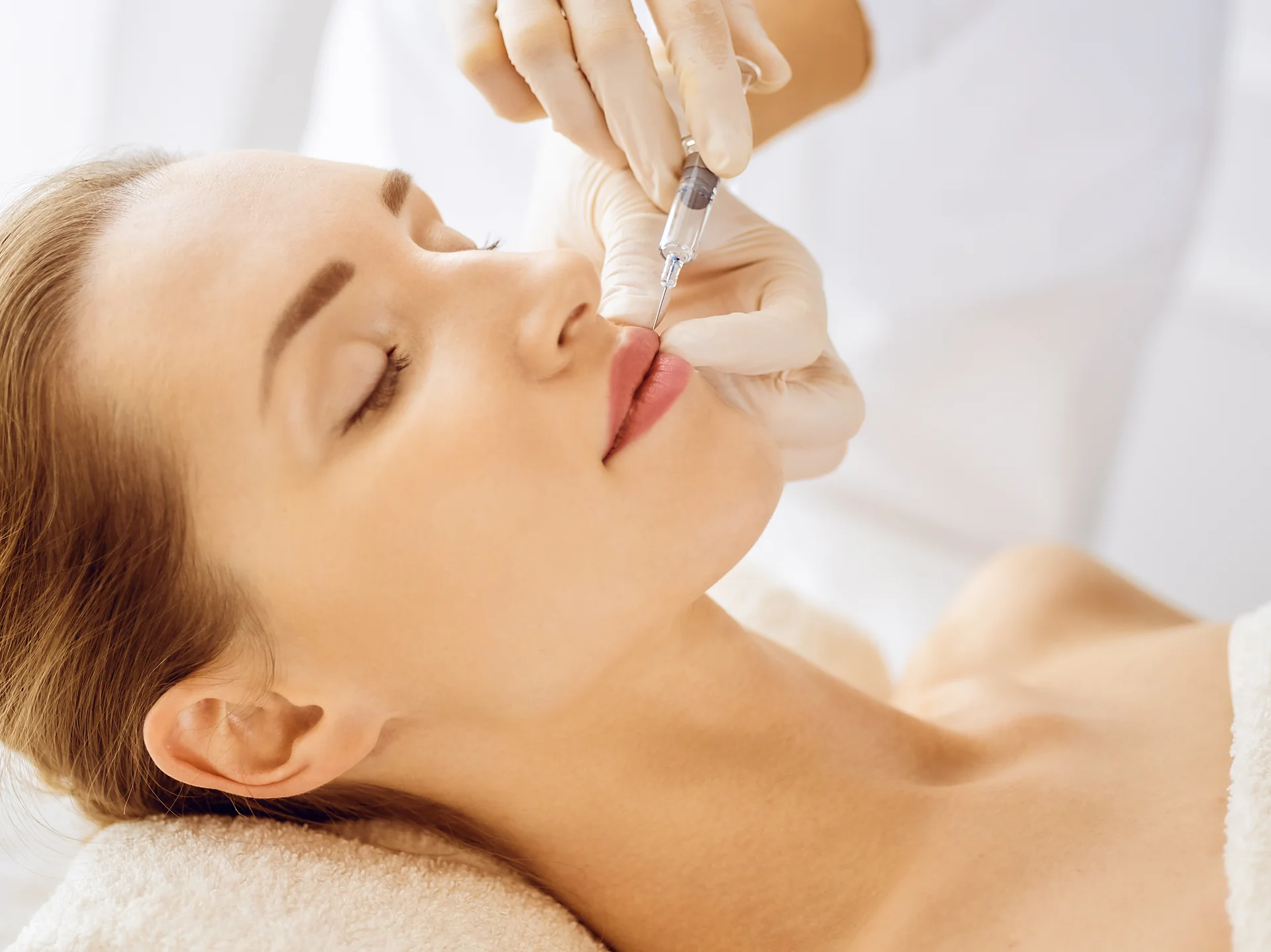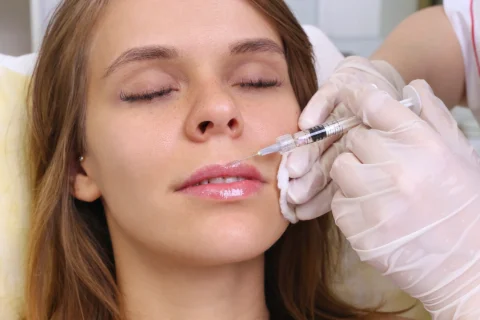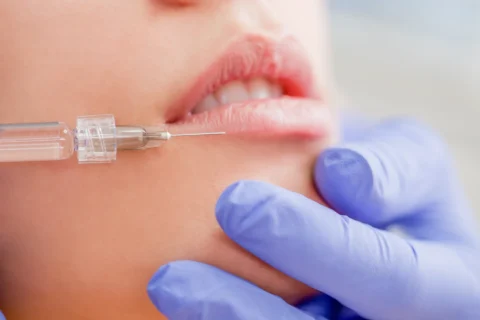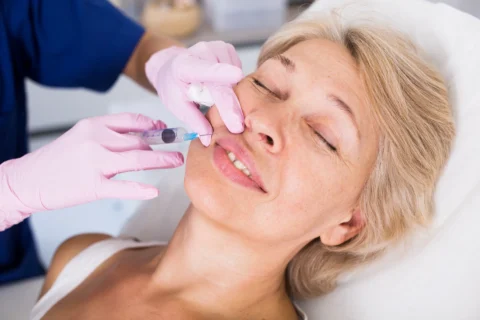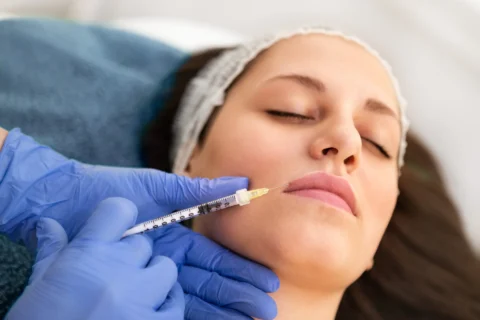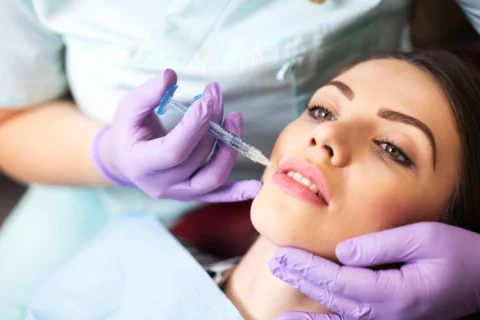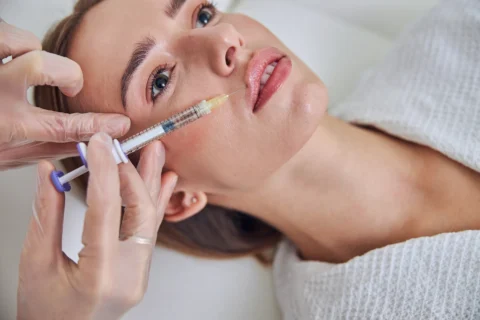Dermal filler treatment is a reliable option for reducing the appearance of facial wrinkles, resolving acne scars, and enhancing your facial features without cosmetic surgery. As this solution involves injections of gel-like substances into the skin, many patients worry about possible pain during the procedure. Because of this, many want to learn more about facial fillers and lidocaine.
So what should you know about dermal fillers with lidocaine? Many dermal filler brands today are already formulated with 0.3% lidocaine to reduce pain during the procedure. Lidocaine can also help reduce swelling and bruising, promoting quicker patient recovery. For dermal fillers without lidocaine, practitioners mix the local anesthetic and the injectable filler using a Luer lock connector.
Everything You Need to Know About Dermal Fillers with Lidocaine
Injectable filler treatments are popular solutions for a variety of cosmetic concerns – they reduce the appearance of mild to severe facial wrinkles, treat acne scars, and even reshape focal areas of the face. Many patients tend to get squeamish about receiving injections of these gel-like substances. Because of this, lidocaine is sometimes mixed with dermal fillers to reduce discomfort.
What are Dermal Fillers with Lidocaine?
Dermal fillers are gel-like substances made of synthetic material or animal-derived substances. These solutions add volume to the skin and boost collagen production, leaving the skin plump, tight, and radiant.
This treatment involves injecting the dermal filler solution into the skin, which can be painful for most patients. Because of this, some dermal filler brands are available with or without lidocaine. Brands with lidocaine usually contain 0.3% of the anesthetic. For dermal fillers without this numbing agent, some practitioners mix 0.1% of lidocaine and epinephrine with the injectable filler substance.
Lidocaine is a type of local anesthetic used for reducing pain by blocking pain signals at the nerve endings of the skin. Widely used in many medical and cosmetic procedures, lidocaine also helps injectable filler treatments as painless and comfortable for the patient as possible.
In a study involving hyaluronic acid fillers with lidocaine, patients report a significant comfort in reducing pain during and after receiving the injections. This local anesthetic didn’t change the results of the procedure at all.
Effects of Lidocaine on Dermal Filler Procedures
Pain has been the most common complaint of patients when receiving dermal filler injections. Many methods have already been done to reduce discomfort, like cooling systems, nerve blocks, and topical and local anesthesia. These methods may have controlled pain but tend to be insufficient. Before hyaluronic acid filler brands, collagen fillers have already formulated substances with adjunct lidocaine, like Zyderm, Zyplast, and Artefill.
Hyaluronic acid filler brands with adjunct lidocaine were reported to offer great potential for promoting a quick and effective treatment, shorter treatment procedure time, and faster recovery with minimal risks added. Aside from its effects of controlling pain, HA filler products with lidocaine were reported to reduce swelling and bruising. This is because lidocaine also acts as an antihistamine when formulated in lower concentrations.
How Practitioners Mix Dermal Fillers with Lidocaine
Some dermal filler brands aren’t mixed with lidocaine. Because of this, practitioners mix this anesthetic on their own to promote patient comfort and satisfaction. The FDA has approved this method of mixing lidocaine with calcium hydroxylapatite filler or Radiesse. Some plastic surgeons also perform this method on HA filler products.
The process of mixing local lidocaine anesthesia with dermal fillers involves using a female-to-female connector to incorporate 0.1% lidocaine into the gel-like substance. This method involves the following steps:
- Prepare your materials:
70% alcohol preps
Luer lock syringe and needle
Sterile rapid-fill Luer-lock-to-Luer-lock connector
1% to 2% lidocaine
- Prepare your lidocaine by cleaning the stopper with 70% alcohol.
- Add lidocaine to the Luer lock syringe at the proper dose.
- Employ a sterile technique in handling materials and connect the syringe with the dermal filler product to the Luer lock connector.
- Keep the dermal filler syringe secured onto the connector.
- Expel a minimal amount of dermal filler to remove the dead space, avoiding having air in the dermal filler.
- Connect the lidocaine syringe to the Luer lock connector.
- Once the 2 syringes are locked on the connector, you can then mix the substances by pumping the syringes back and forth around 8 to 10 times.
- Remove the syringes.
- The dermal filler syringe is now ready for use.
Precautions on Using Dermal Fillers with Lidocaine
Lidocaine is generally well-tolerated by patients and causes only minimal added risks. The extreme risks associated with dermal fillers, especially those with lidocaine typically only occur under the hands of inexperienced injectors. Patients must ensure
Some physicians report concerns about the technique of mixing these substances in a clinical setting and are strong with measures to prevent compromising the product’s quality, volume, efficacy, consistency flow characteristics, and sterility. Meanwhile, allergic reactions remain the primary concern for adding lidocaine to dermal fillers, so patients and practitioners must maintain a thorough interview to discuss these possible risks.
Get Younger-Looking and Radiant Skin with Painless Dermal Filler Injections at Ethos Spa
Dermal filler treatment is a popular solution for a wide range of cosmetic concerns. Since it involves injecting the treatment area with gel-like substances, the pain has been a common complaint of patients. That’s why most facial filler brands today are already mixed with lidocaine, reducing pain, swelling, and bruising. Physicians also have techniques for mixing this anesthetic with dermal fillers in a clinical setting.
Ethos Spa is one of the trusted medical spas in New Jersey, equipped with advanced techniques and tools for providing a wealth of cosmetic solutions. We also offer dermal filler treatments performed by highly-trained medical professionals who prioritize your safety, comfort, and satisfaction. Get started on achieving a radiant and youthful-looking appearance today and book an appointment with us.

